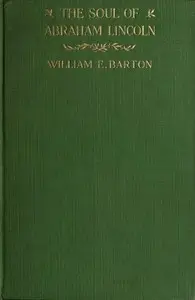"Personal Memoirs of P. H. Sheridan, General, United States Army — Volume 1" by Philip Henry Sheridan is a historical memoir from the late 1800s chronicling the life and career of General Sheridan, particularly his experiences in the American Civil War and its reverberations. Sheridan, writing to both his fellow soldiers and future historians, recounts his origins, beginning with his family's immigration from Ireland and his upbringing in New York and the Midwest. From a young age, he moved from working odd jobs to overcoming academic challenges and eventually securing a place at West Point, where he faced difficult situations before graduating and beginning his journey as a soldier. The book details his development and the pivotal moments that shaped his military service.

Personal Memoirs of P. H. Sheridan, General, United States Army — Volume 1
By Philip Henry Sheridan
Experience the making of a general as he goes from immigrant roots to the battlefields of a nation divided.
Summary
About the AuthorPhilip Henry Sheridan was a career United States Army officer and a Union general in the American Civil War. His career was noted for his rapid rise to major general and his close association with General-in-chief Ulysses S. Grant, who transferred Sheridan from command of an infantry division in the Western Theater to lead the Cavalry Corps of the Army of the Potomac in the East. In 1864, he defeated Confederate forces under General Jubal Early in the Shenandoah Valley and his destruction of the economic infrastructure of the Valley, called "The Burning" by residents, was one of the first uses of scorched-earth tactics in the war. In 1865, his cavalry pursued Gen. Robert E. Lee and was instrumental in forcing his surrender at Appomattox Courthouse.
Philip Henry Sheridan was a career United States Army officer and a Union general in the American Civil War. His career was noted for his rapid rise to major general and his close association with General-in-chief Ulysses S. Grant, who transferred Sheridan from command of an infantry division in the Western Theater to lead the Cavalry Corps of the Army of the Potomac in the East. In 1864, he defeated Confederate forces under General Jubal Early in the Shenandoah Valley and his destruction of the economic infrastructure of the Valley, called "The Burning" by residents, was one of the first uses of scorched-earth tactics in the war. In 1865, his cavalry pursued Gen. Robert E. Lee and was instrumental in forcing his surrender at Appomattox Courthouse.














